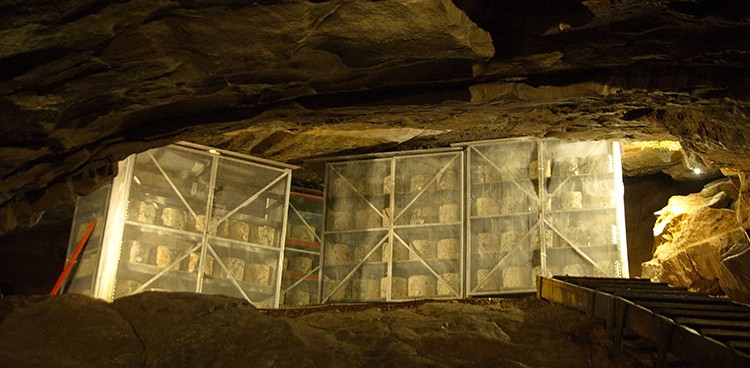
In this blog series, culture intern Rachel E. McLean explores her passion for cheddar. Read along as she discovers the history of cheddar, what makes it taste sharp, and more.
Cheddar is a variety that most cheese connoisseurs know and love, or at the very least can appreciate. In the US, it’s the second most popular cheese, just behind mozzarella. So how did cheddar come to be, and how has it continued to be one of the most popular cheeses for centuries?
Cheddar has a long history dating back to the 12th century, in a community in Somerset, England. Its namesake, Cheddar Village, is a small town with gorges and caves that farmers used to keep milk cool on hot days. The myth behind the birth of cheddar is that a milkmaid forgot about a pail of milk in one of the caves. When she returned, she discovered the milk had hardened into the perfect golden goodness that we know and love today.

Cheddar Gorge—Photo Credit: Dan (catching up) | CC
Soon enough, English monarchs developed a taste for it. There are records of King Henry II purchasing 10,240 pounds of cheddar in 1170; he declared it the best cheese in England. His son, King John, carried out a tradition of buying cheddar for royal banquets. King Charles I—who reigned in the early 17th century—apparently pre-ordered his wheels (a necessary measure at the time, given the high demand for cheddar), while Queen Victoria received a colossal wheel of the aged stuff—weighing more than half a ton—as a wedding gift.
While cheddar may have descended from the English countryside, it is hardly exclusive to the British, having migrated all over the world throughout the 19th century. British colonists who moved to America brought their cheesemaking techniques with them, and by 1790, they were exporting cheddar to their home country.
The mid-19th century was a time of modernization in both the US and the UK. In England, Joseph Harding—dubbed by many as the “father of cheddar cheese”—cleverly applied science to come up with reliable techniques for crafting this beloved wheel. According to The Oxford Companion to Cheese, he used a curd scalding method to obtain the desired fine texture for cheddar. He’s also believed to have improved the cheese mill, which breaks up curds into tiny pieces (a key step in making cheddar).
Meanwhile, in 1851, the world’s first cheese factory opened in upstate New York, and it specialized in none other than cheddar. More factories followed, and this large-scale production of cheddar proved to be extremely successful, efficient, and profitable. In fact, much of its output was exported to Britain, which was late to the factory game.
Given the fact that cheddar was the first mass-produced cheese, it’s not too surprising that it’s an ingredient in processed Kraft singles, or what everyone else in the world calls “American cheese.” In 1903, Canadian James L. Kraft moved to Chicago to sell cheese wholesale. He wanted to purposefully “recycle” discarded chunks of cheddar and in 1916, he came up with the recipe for the Kraft Single: repasteurized shredded cheddar and sodium phosphate. The product ultimately became a favorite in American households (and for many kids, their first taste of cheese) and was a staple food for US troops in both World Wars.
In the 21st century, cheddar is a ubiquitous cheese, especially in English-speaking nations. Whether clothbound or waxed, dyed or natural, or aged for a few months or a few years, it’s safe to say that cheddar will remain a classic favorite for many turophiles.
Feature Photo Credit: Andrew | CC (Cheese cave in Cheddar, England)



